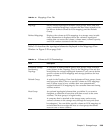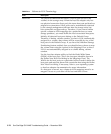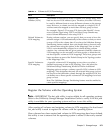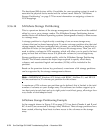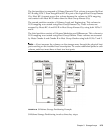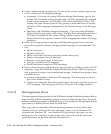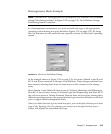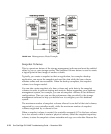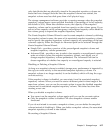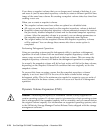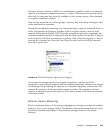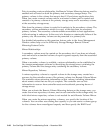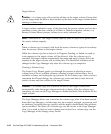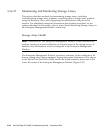
Chapter 3 Storage Arrays 3-77
only data blocks that are physically stored in the snapshot repository volume are
those that have changed since the time the snapshot volume was created, the
snapshot volume uses less disk space than a full physical copy.
The storage management software provides a warning message when the snapshot
repository volume nears a user-specified threshold (a percentage of its full capacity;
the default is 50%). When this condition occurs, the capacity of the snapshot
repository volume can be expanded from free capacity on the volume group. If you
are out of free capacity on the volume group, unconfigured capacity can be added to
the volume group to expand the snapshot repository volume.
The Create Snapshot Volume Wizard is used to create snapshot volumes by defining
the snapshot volume's name, the name of its associated snapshot repository volume,
and to specify the snapshot repository volume's capacity as a percentage of the base
volume's capacity. Either the Simple or Advanced path can be selected through the
Create Snapshot Volume Wizard:
■ Simple Path - provides a preview of the preconfigured snapshot volume and
snapshot repository volume parameters.
■ Advanced Path - provides a way to select a free capacity or unconfigured capacity
node on which to place the snapshot repository volume, and allows you to
change snapshot repository volume parameters. The Advanced Path can be
chosen regardless of whether free capacity or unconfigured capacity is selected.
Disabling or Deleting a Snapshot Volume
As long as a snapshot volume is enabled, storage array performance is impacted by
the copy-on-write activity to the associated snapshot repository volume. If a
snapshot volume is no longer needed, it can be disabled, which will stop the copy-
on-write activity.
If the snapshot volume is disabled, you can retain it and its associated snapshot
repository volume. When you need to create a different point-in-time image of the
same base volume, you can use the re-create option to reuse the disabled snapshot
volume and its associated snapshot repository volume. This takes less time than
creating a new one.
When you disable a snapshot volume:
■ You cannot use the snapshot volume again until you use the re-create option.
■ Only the snapshot volume is disabled. All other snapshot volumes remain
functional.
If you do not intend to re-create a snapshot volume, you can delete the snapshot
volume instead of disabling it. When you delete a snapshot volume, the associated
snapshot repository volume is also deleted.
Re-creating a Snapshot Volume



